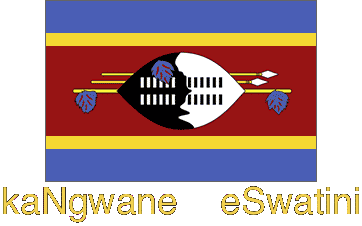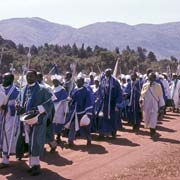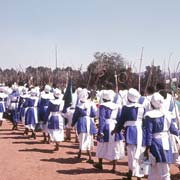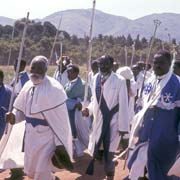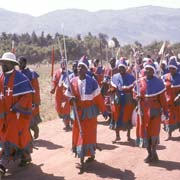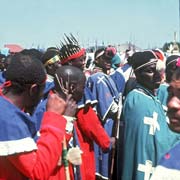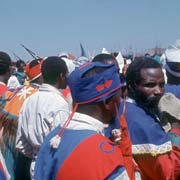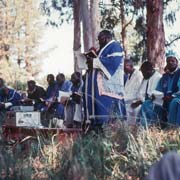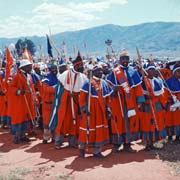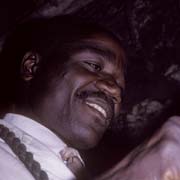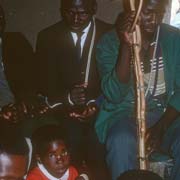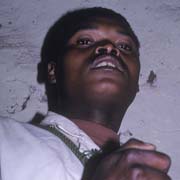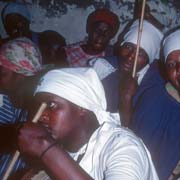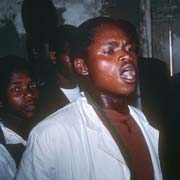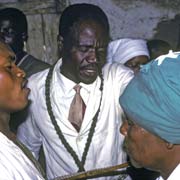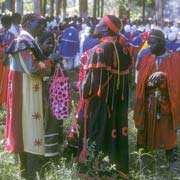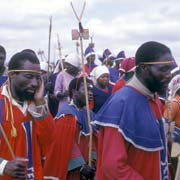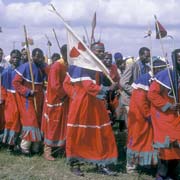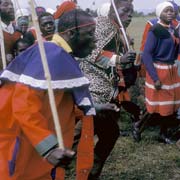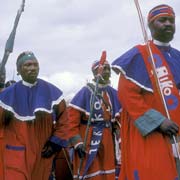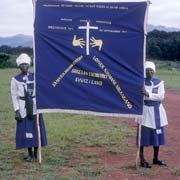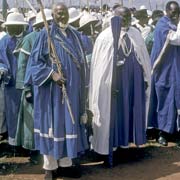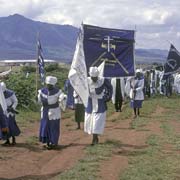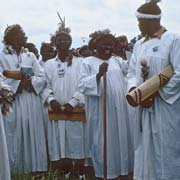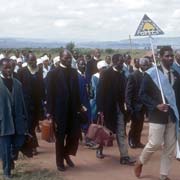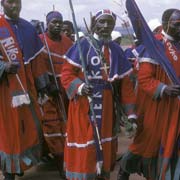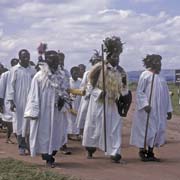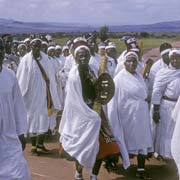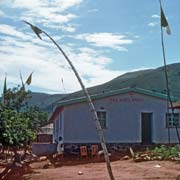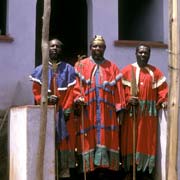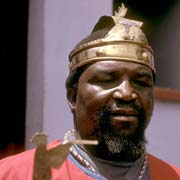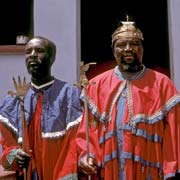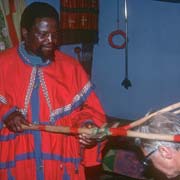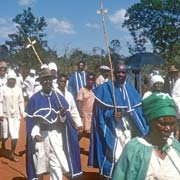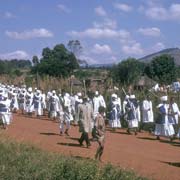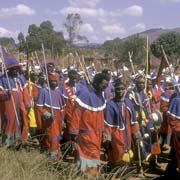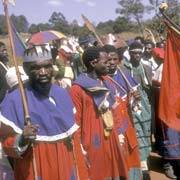Photos of African 'Zionist' Churches in Swaziland
African 'Zionist' Churches in Swaziland
As in other parts of Africa, the coming of missionaries and attempts to convert the people to Christianity has led to the establishment of local native churches that exist, apart from the established "Western" Catholic and Protestant ones. The various independent "Zionist" churches ("EmaZayoni" in the siSwati language) are denominations that derive from the Christian Catholic Apostolic Church in Zion, Illinois, U.S.A, whose missionaries came to South Africa in 1904. The name therefore has nothing to do here with Jews wanting to settle in Israel.
you may then send it as a postcard if you wish.
These African Independent Churches are to be found throughout southern Africa. In Swaziland these are often based in a modest house in a village or homestead where the congregation gathers on Sundays and, led by weekend preachers dressed in white coats and carrying staffs, they will spend most of the day singing, drumming and preaching. The emphasis is on healing and in this there are many aspects that are similar to the practices of the traditional "sangoma" healers. People often join these churches because "I was sick; the Zionists prayed for me; now I am well".
Every Easter all different Zionist churches come together at Lobamba and, preceded by banners announcing the name of their group and where they come from, they march into the Royal Village and parade past the King on Good Friday and Easter Sunday. They sing as they go along and often shout as if in trance, another parallel with traditional healers: possessed by the Holy Spirit instead of Ancestral Spirits. All groups have different costumes, but most have white robes with blue or green sashes. The old men resemble prophets from the Old Testament, dignified in their robes, walking with their staffs, followed by the faithful.
Possibly the "Zionist" Native African church with the most colourful costumes, the Jericho Church was based in the homestead of its Head, Pastor Eliyasi Vilakati, in a village near Mankayane in the west of Swaziland. They wear red and blue robes and often gold coloured crowns, pith helmets or very inventive headdresses of different materials. As in other African churches, their rituals seem to include practices that are also common to those performed by the traditional healers. There were blessings with holy staffs, water that was made holy that could be taken home, possession by the Holy Spirit instead of Ancestral Spirits.
At Easter the Jericho faithful would join the other "Zionist" churches in the Royal village of Lobamba for a three day ceremony where they would parade past the King in full costume; often the word "Jericho" was emblazoned on the sashes they were wearing, although this could also be spelled as "Jeriko" or even "Jeliko" (as an "r" doesn't occur in the siSwati language). They would sing and dance for those three days, an impressive and colourful sight.


